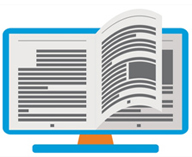Le présent manuel est fondé sur l’expérience accumulée dans les nombreux ateliers de formation qui ont été mis en oeuvre en Afrique orientale et australe sous le projet LinKS de la FAO. Ce manuel de formation représente un guide conceptuel pour les formateurs qui peut être utilisé pour les guider dans les questions de genre et de savoirs locaux qui sont des éléments importants pour la gestion de la biodiversité agricole et la sécurité alimentaire. Il est évident, quand on travaille avec ce Manuel de formation, que la biodiversité agricole et la sécurité alimentaire sont des questions complexes qui nécessitent une attention minutieuse.
This French-language manual offers guidance for trainers on issues of gender and local knowledge, in the context of agricultural biodiversity management and food security. Based on experiences from training workshops in Eastern and Southern Africa, held in the context of FAO’s LinKS project, the document challenges the myth that modern technologies automatically reduce poverty or mitigate hunger, demonstrating how these technologies may not be appropriate in specific situations. It includes suggested readings, as well as fact sheets with tips for trainers to plan modules and adapt materials to local contexts and participants' needs.

